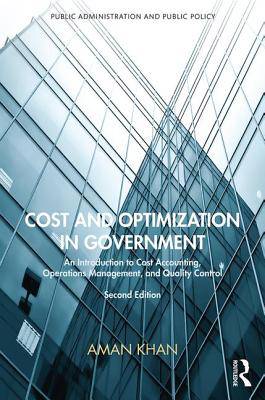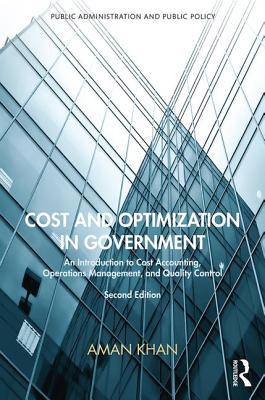
- Retrait gratuit dans votre magasin Club
- 7.000.000 titres dans notre catalogue
- Payer en toute sécurité
- Toujours un magasin près de chez vous
- Retrait gratuit dans votre magasin Club
- 7.000.0000 titres dans notre catalogue
- Payer en toute sécurité
- Toujours un magasin près de chez vous
Cost and Optimization in Government
An Introduction to Cost Accounting, Operations Management, and Quality Control, Second Edition
Aman KhanDescription
The careful management of costs and operations are two of the most essential elements of operating any successful organization, public or private. While the private sector is driven by profit-maximizing incentives to keep costs to a minimum, the public sector's mission and goals are guided by a different set of objectives: to provide a wide range of essential goods and services to maintain social order, improve public health, revitalize the economy, and, most importantly, to improve the quality of life for its citizens. Although the objectives are different, it is just as important for public decision makers to make the best use of available resources by keeping the cost of operation to a minimum. This book demonstrates that with a careful emphasis on cost accounting, operations management, and quality control, all organizations and governments can increase efficiency, improve performance, and prepare to weather hard times.
This book is divided into three parts: Part I offers thorough coverage of cost fundamentals, with an emphasis on basic cost concepts, cost behavior, cost analysis, cost accounting, and cost control. Part II examines optimization in costs and operations in government including traditional or classical optimization with applications in inventory management and queuing, followed by mathematical programming and network analysis. Finally, Part III explores special topics in cost and optimization, in particular those related to games and decisions, productivity measurement, and quality control. Simple, accessible language and explanations are integrated throughout, and examples have been drawn from government so that readers can easily relate to them. Cost and Optimization in Government is required reading for practicing public managers and students of public administration in need of a clear, concise guide to maximizing public resource efficiency.
Spécifications
Parties prenantes
- Auteur(s) :
- Editeur:
Contenu
- Nombre de pages :
- 366
- Langue:
- Anglais
- Collection :
Caractéristiques
- EAN:
- 9781420067217
- Date de parution :
- 15-06-17
- Format:
- Livre relié
- Format numérique:
- Genaaid
- Dimensions :
- 152 mm x 229 mm
- Poids :
- 656 g

Les avis
Nous publions uniquement les avis qui respectent les conditions requises. Consultez nos conditions pour les avis.






